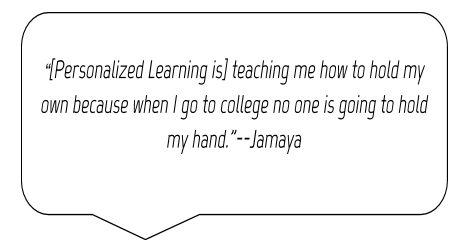My first impressions of student ownership was anxiety and fear. How would a shift in responsibility impact the students? As educators we tend to believe we have to bear the brunt of the workload. We determine the assignments, the grades and the overall achievement. In a nutshell, we want control. Passing the baton of accountability would transfer control from the teacher to the student. What would this make me? A facilitator of learning.
As I delved into the frightening world of student ownership the more I realized it is an illusion that I am not in control. I create the barriers and markers of ownership. My journey is not an overnight success or a Lifetime movie where it all comes together in an hour and a half. For me the process was and still is sluggish. I wasn’t able to wrap my head around the idea that a teenager could possibly manage themselves. My first step was to give students choices for their classwork. Many default to “I will give a choice board!” But I needed my choice board to be different than those I have used in the past. Prior to personalized learning, my choice boards were assignments I already created. Yes, they got to choose which ones to do, but they were not pushing my students to think beyond what I wanted them to think about. After participating in Personalized Learning break-out sessions, I realized I can create choice boards that are geared to student learning styles and within that develop their assignments higher on the blooms level. One of my students Jamaya expressed how the choice boards allowed her to pick what she wants and then feels more confident. She stated, “I get to pick what I want. I can write for one topic, then draw for the next. I am more comfortable with the topics now.” Listening to the students and watching their self confidence rise has only driven me to incorporate more Personalized Learning into my lessons.
Another piece of accountability I incorporated with students is to take ownership of their understanding of content and dive into analyzing their assessments. They take self-check quizzes after each topic and shade in the ones they get correct. After the unit is complete they have a clear understanding of which terms and standards they need to work on prior to their unit assessment. As I stepped deeper into the role of facilitator, I realized how much more they are getting out of the self-check quizzes. After they receive score, they are more likely to request deeper explanations and understanding. Many students started going through their notes, highlighting content they missed! I couldn’t believe what I was seeing—students started to invest themselves into their own success. I wasn’t alone in wanting them to achieve—they wanted it for themselves! For product based assessments we used rubrics for self-assessment and peer review. These two pieces helped them see where they were lacking and shining in their own eyes. My student Jacob expressed that he “liked knowing what to look over and ask questions about”. What’s important to note here however is, this was not done at the end. Instead rather, it was done in the middle of the unit project so they can make the corrections prior to submission. This gave them more confidence in the product they were turning into me for grading. Examples of these two pieces can be found at the bottom of this blog.
Turning my classroom into an area of accountability was one of the most difficult transitions I have ever done. However, we all know, the most difficult experiences in life tend to be the most rewarding. This has truly been a rewarding experience for me and my students.
One of my perks is watching my students grow in maturity, self reflection and ownership of actions. They no longer “blame me” for their grades or their efforts. Students will now acknowledge their choices and accept responsibility for their efforts, or lack thereof. Our relationship has dramatically shifted because I am a facilitator of their success. When they start to become unsuccessful due to their choices, we revisit their options and get back on track. I have become a teacher who shows deeper emotions towards the process rather than the output. We expect students to receive a diploma at the end of high school; with student ownership and accountability I believe they truly are the ones in possession of their award.
Examples:
Progressive Era Choice Board–These were differentiated based on test scores. The one shown was for the middle of the road.
Shading Standards My self check quizzes are google forms they click on my website and after they submit they can review their answers and the correct answers

